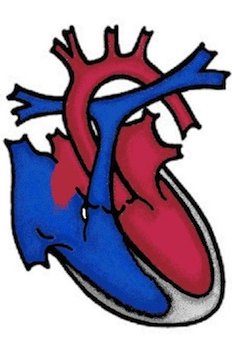The atrial septal defect (ASD) is a hole in the septum between the atria of the heart. Before birth, all people have a hole in the atrial septum, the so-called "foramen ovale". After birth, this hole closes in the first few weeks.
What are the effects of an ASD II?
In a third of people, a small hole remains open and is called a persistent foramen ovale (PFO). PFOs and small atrial septal defects (less than 6 mm in diameter) have a high probability of closing or shrinking spontaneously during infancy.
Larger defects place a strain on the circulation. The hole creates a short circuit through which oxygen-rich blood flows from the left to the right atrium (left-right shunt). As a result, the right heart has to work harder and the increased blood volume puts a strain on the pulmonary circulation.
Symptoms
Many children have no symptoms at all. With very large ASDs, children often suffer from respiratory infections and thrive poorly.
How is an atrial septal defect treated?
Closure is only necessary for larger defects and in symptomatic children.
Operation:
An ASD near the large veins (sinus venosus defect) or on the heart valves (ASD I) is closed by a patch from the patient's own pericardium in a heart operation. This is usually performed at preschool age.
Catheter intervention:
If the hole is located centrally in the atrial septum (ASD II) and has sufficient margins to adjacent structures, it can be closed interventional with an umbrella (device) an umbrella (device).
To do this, a catheter is advanced into the heart via the vein in the groin. A transesophageal cardiac ultrasound (TEE) and balloon are used to precisely measure the defect and select the appropriate device. The implant remains in the heart for the rest of the patient's life and is overgrown with the patient's own heart tissue.
Whether an operation or a catheter intervention is more suitable is decided on the basis of the medical requirements and in consultation with the patient and parents. The hospital stay for an umbrella closure is about 3 days, in the case of an operation about 1 week. Surgical ASD closure also achieves a cosmetically pleasing result using minimally invasive techniques.
